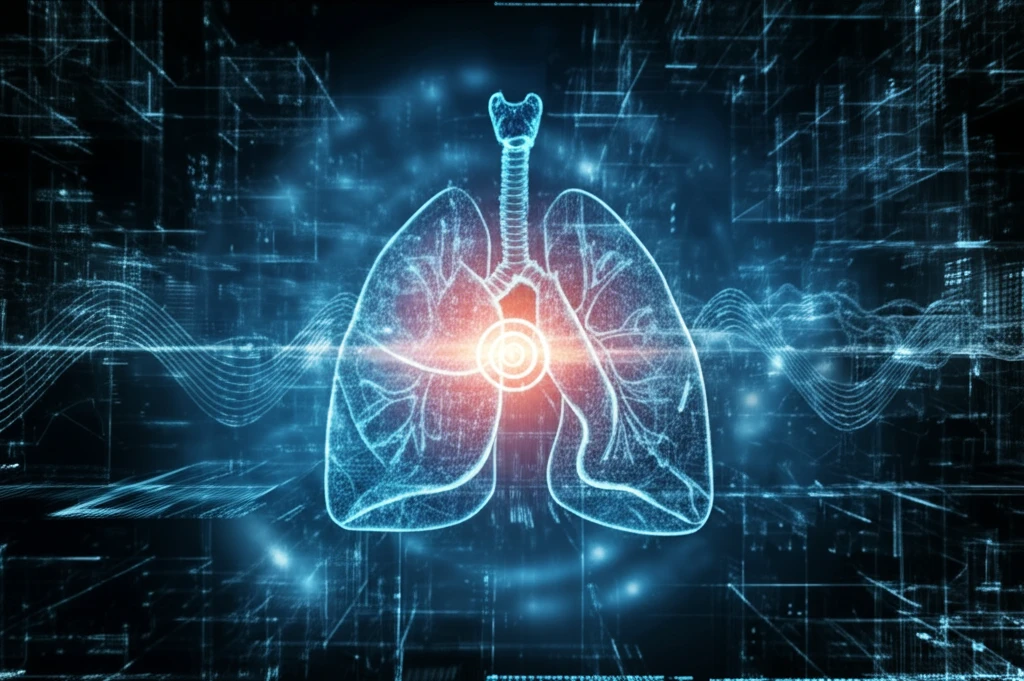
Breathe Easier: How Advanced CT Scans are Revolutionizing Lung Cancer Detection
"Uncover the life-saving potential of cone-beam computed tomography (CBCT) and learn how it improves accuracy in detecting mobile lung tumors."
In the realm of medical breakthroughs, imaging technology plays a pivotal role, particularly in the early and accurate diagnosis of diseases like cancer. Among the arsenal of diagnostic tools, Computed Tomography (CT) scans stand out as essential for screening and staging various cancers. In radiotherapy, CT imaging guides the way, outlining tumors and critical structures to ensure precise treatment planning. However, patient motion can blur the clarity of CT images, posing challenges to accurate diagnoses and treatment.
Traditional methods to counter motion artifacts include rapid gantry rotations and motion correction techniques. Four-dimensional CT (4D CT) scans have also emerged, sorting projections into respiratory motion phases to reconstruct clearer images. Now, a promising innovation has entered the scene: Cone-Beam Computed Tomography (CBCT). CBCT employs high-resolution and sensitive flat-panel detectors, offering a robust approach to volumetric tomography, especially beneficial for visualizing tumors that move during respiration.
CBCT is rapidly becoming a vital tool for image-guided radiation therapy (IGRT) as an increasing number of radiation therapy machines are equipped with kV on-board imaging (OBI) systems. However, like other CT methods, CBCT is also susceptible to motion-induced image degradation, which can obscure tumors and critical structures. Researchers are actively working to refine this technology to ensure accuracy and reliability, and CBCT is an important advancement that could change the way lung cancer is detected and treated.
Understanding Cone-Beam CT (CBCT) and Mobile Lung Tumors

To address the challenge of motion artifacts in CBCT imaging, a recent study has focused on quantitatively assessing and modeling variations in CT number distributions for mobile targets. This research involved acquiring CBCT images of water-equivalent gel targets inserted into a mobile thorax phantom, which mimics respiratory motion. By controlling the phantom’s cyclic motion in one dimension (superior-inferior), researchers simulated the movement of lung tumors during breathing.
- Motion Amplitude: The extension of CT number distribution increased linearly with motion amplitude, with maximum target elongation reaching twice the motion amplitude.
- CT Number Levels: Mobile targets exhibited smeared CT number levels over a broader distribution. For example, the CT number level for a 20 mm target dropped by nearly 30% with a 20 mm motion amplitude.
- Motion Frequency: The frequency of motion significantly influenced spatial and level variations in CT number distributions. Higher motion frequencies led to decreased CT number profile levels for the medium target.
The Future of CBCT in Lung Cancer Treatment
This innovative model holds significant promise for enhancing the accuracy of tumor detection and treatment planning. By understanding and correcting for motion artifacts, medical professionals can improve the precision of radiotherapy and other interventional applications, ultimately leading to better outcomes for patients with mobile lung tumors. Further research and refinement of these techniques will pave the way for more effective and personalized cancer treatments.
